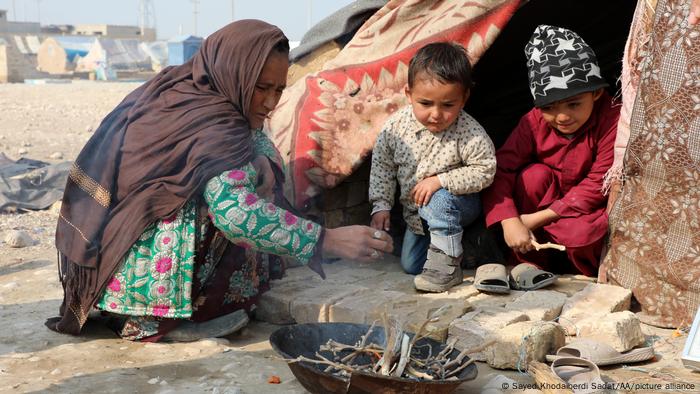A massive oil spill helped one Louisiana billionaire avoid paying income tax for 14 years
Jesse Eisinger, Paul Kiel and Jeff ErnsthausenThe Courier
Sun, January 2, 2022
After the Deepwater Horizon offshore drilling rig exploded in 2010, environmentalists surveying the damage in the Gulf of Mexico came upon a mystery. The water had oil slicks that, because of the currents, couldn’t have originated from the site of the notorious accident.
With the help of satellite imagery, they figured out that oil was leaking from a different spill, a six-year-old disaster the public knew almost nothing about. In September 2004, Hurricane Ivan had swept the legs out from under a 40-story oil-drilling platform operated by a company called Taylor Energy, causing a leak that continues to this day. It is the longest-running — and by one estimate, the largest — U.S. oil spill ever recorded, a contentious saga that prompted a recent “60 Minutes” segment.
It’s been an environmental nightmare for the region — but a massive tax bonanza for Phyllis Taylor, the owner of Taylor Energy and the fallen rig.
According to ProPublica’s analysis of a secret trove of tax data, from 2005 to 2018, Taylor took in some $444 million in income, most of it from wages, interest, dividends and capital gains, and didn’t pay a cent in federal income tax.
Gulf of Mexico drilling: Oil industry and Biden administration clash over latest proposals
That’s in significant measure because she was able to transform money her company was compelled to spend cleaning up the oil spill into a perfectly legal nine-figure tax write-off for herself.
Representatives for Taylor, now 80, did not respond to repeated requests for comment.
Taylor is part of a set of ultrawealthy Americans who manage to avoid federal income taxes for years on end by using their businesses or leisure interests to throw off enough deductions to offset the millions or even billions of dollars they make. We’ve nicknamed the group the biggest losers. Taylor’s story shows just how lucrative it can be to be a member of that particular club.
Patrick Taylor, Phyllis Taylor’s husband, founded Taylor Energy in 1979. He would eventually become the richest man in Louisiana and enjoyed the sort of lifestyle that went with the title. He raced speedboats on the Mississippi, rode bulls in rodeos and skydived more than 500 times. But he often said he preferred to be known for his role in advocating for the creation of a beloved state program that provided scholarships to Louisiana colleges and universities.
Taylor Energy operated out of an ornate four-story mansion in New Orleans, off Lee Circle, where a statue of Robert E. Lee stood until 2017. Female employees were not allowed to wear pants, and employees addressed their superiors as “sir” or “ma’am.” Patrick’s office had hand-painted blue-and-white silk wallpaper from a Russian palace, while a nearby dining room featured marble fountains from an 18th-century French chateau. Rooms were named after Ronald Reagan and the British naval hero Admiral Horatio Nelson
The 'gentle dove'
Phyllis cut an unusual figure in the world of brash wildcatters. She started out in the business working for another Louisiana oilman, sometimes being mistaken for his coffee-bearing assistant before he surprised the men in the room by announcing she was his attorney. She married Patrick Taylor in 1964 and served on the board of directors of Taylor Energy while he ran the company.
Deemed the “gentle dove” of Louisiana for her philanthropy, Phyllis Taylor supported local education and art institutions, as well as housing for the homeless. She loved to travel, and in an interview with Condé Nast Traveler, extolled the joys of circumnavigating the world: “The difference between a short cruise and a world cruise is night and day, storm and calm, fleeting thought and thoughtfulness. With an extended cruise you absorb the lifestyle of life at sea; with the great advantage of having a crew and staff that treats you like royalty.” A frequent hunter, Taylor proudly displayed the skin and head of a leopard she shot in Zambia.
The year Ivan hit changed Phyllis Taylor’s life. A couple of months after the hurricane, her husband died at age 67. At 63, she took over the company.
More: US says oil, gas sales damage climate — but won't stop them
Deaths create a spectacular tax boon for the wealthy, what some experts consider one of the largest loopholes in the code.
Taylor Energy had ballooned in value in the 25 years since its founding. If Patrick Taylor, who controlled the vast majority of the company, had sold it while he was alive, the Taylors would have owed a huge sum in capital gains tax. But all of that value disappeared at death for the purposes of taxes thanks to a widely decried provision of the code that will cost the U.S. Treasury more than $500 billion in lost taxes over the next decade. Phyllis inherited the company and became the wealthiest woman in Louisiana, worth an estimated $1.6 billion. There’s no estate tax for property transferred to a spouse.
'A tax incentive'
In 2008, four years after Taylor Energy became aware of the spill, the company had yet to clean it up. Taylor decided she wanted out of the business. She sold all of the company’s oil rigs and other assets, except for the damaged rig, to two South Korean entities. Taylor, who owned about 95% of the company, according to her former CEO, received close to $1.2 billion of the roughly $1.25 billion price tag.
Yet Taylor was legally allowed to portray the sale to the IRS in a very different light — and that in turn depended on the fact that the law allows owners of private companies a lot of leeway in determining the value of their assets. Since Taylor was inheriting the company tax-free, she and her advisors had every reason to assign it a high initial value, because that would mean that when she later sold the assets, the high value would minimize or eliminate the gain on paper.
“When property is transferred between spouses at death, there’s a tax incentive to aggressively value it on the high end,” said Gregg Polsky, a tax law professor at the University of Georgia School of Law, who has been retained as a consultant to ProPublica.
Taylor’s tax records suggest that’s what happened. Taylor did not record a gain on the sale of her company. In fact, she was able to report a loss of $211 million.
It’s difficult for outsiders to value a private company. But a former company insider said Taylor Energy was sold at a premium. “I did the valuation. I know what the assets were worth and know what we sold them for. We did not take a loss. Period,” John Pope, Taylor Energy’s former CEO, told ProPublica.
The upshot of the claimed loss was that Taylor paid no federal income tax in a year when she realized an enormous gain from the sale. She even got a remarkable extra goodie: refunds on $30 million in taxes she’d paid in previous years.
Cleaning up the spill

A March 31, 2015, photo shows an oil sheen drifting from the site of the former Taylor Energy oil rig in the Gulf of Mexico, off the coast of Louisiana.
After the 2008 sale, what was left of Taylor Energy was devoted to one thing only, cleaning up the spill. The company had professed to be trying to plug the leaking oil well but seemed to make no progress.
A few months after the sale, the federal agency that oversees drilling in the Gulf negotiated an agreement that required the company to create a $666 million trust to cover the cost of the cleanup.
That was a lot of money — more than half of the proceeds from the company’s sale — but it came with a silver lining. Because Taylor Energy was set up as a sole proprietorship, its income and losses flowed through to Phyllis’ personal taxes. She could write off the costs of the cleanup against her own income.
Oil: Coming off climate talks, US holds huge oil lease sale in Gulf of Mexico
It may be surprising that the costs of cleaning up an environmental disaster are tax-deductible. But such write-offs are legal, qualifying as “ordinary and necessary” business expenses. By contrast, fines and penalties are not deductible. Oil giant BP was able to deduct most of the settlement it reached with the government over the Deepwater Horizon spill because much of it went to address the environmental calamity, rather than to penalties for wrongdoing.
Such deductions are unobtainable for executives or shareholders at publicly traded corporations, where only the company gets to deduct the expenses.
It took years for the extent of the spill to become known. Taylor disclosed almost nothing about the accident and fought public records requests. The reality unspooled thanks to the persistence of environmental groups, investigative reporting and revelations from a dizzying array of suits and countersuits.
In the years after it established the cleanup trust, Taylor Energy claimed that it could not have foreseen such an accident and that stopping the leak was technologically impossible.
'Stall tactics over cooperation'
In 2012, the Coast Guard finally ordered Taylor to install a dome to contain the leak, but three years later, when Taylor Energy settled a lawsuit that forced it to start publicly disclosing more about its efforts, the company had not even finished the design.
According to a later review by the Coast Guard, Taylor Energy was “obstinate, difficult to deal with and verbally combative,” and preferred “to employ stall tactics over cooperation with an intention to confuse, delay or misdirect” the government.
In 2015, The Associated Press revealed that both Taylor and the government had dramatically underestimated the volume of the leak. The Coast Guard released a new estimate, much higher than its previous ones and 20 times the roughly 4 gallons a day Taylor was claiming.
Oil and economy: LSU experts expect Louisiana to add oil and gas jobs, but a return to pre-2015 levels is unlikely
In a lawsuit, a federal expert put it higher still, estimating the spill to be up to 29,400 gallons a day. That would mean that starting in 2004, more oil spilled into the Gulf from Taylor Energy’s rig than the estimated 130 million gallons that gushed into it as a result of BP’s Deepwater Horizon catastrophe.
For more than a decade, Taylor Energy has launched a series of legal actions against the government to try to recoup at least a portion of the money in the trust or to end its cleanup obligations, saying it has done all that it could. The company has come up empty every time. Rather than put resources into fixing the problem, Taylor has been “putting all of its money and efforts into fighting the cleanup,” said Brettny Hardy, a senior attorney for Earthjustice, an environmental group.
Today the oil is still flowing at a rate of about 1,000 gallons a day. A protective dome, finally installed by a contractor the Coast Guard hired after losing faith in Taylor, contains the leak.
Taylor has weathered all of this remarkably well. She remains known as a great benefactor to her city and state. Praising her philanthropy, the U.S. Marine Corps gave her honorary marine status in 2013, and The Times-Picayune granted her its “Loving Cup” award in 2016.
The combination of the loss on the sale of the company and the expenses from the cleanup meant Taylor did not pay any income taxes from 2005 through 2018. At the end of 2018, her reserve pool of losses exceeded $330 million, making it a distinct possibility that she would never have to pay income taxes again.
— ProPublica is a nonprofit newsroom that investigates abuses of power. The Secret IRS Files is an ongoing reporting project. Sign up to be notified when the next story publishes.
This article originally appeared on The Courier: Oil spill helped billionaire Phyllis Taylor avoid paying income tax
































